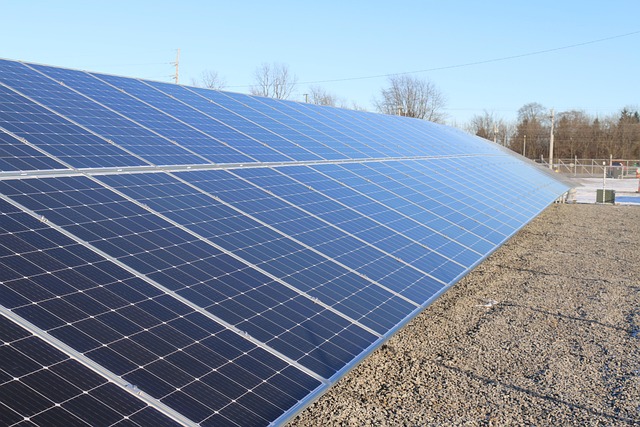The Role of Green Energy in Achieving Net-Zero Goals
As the world faces the ever-pressing challenge of climate change, the concept of achieving net-zero greenhouse gas emissions has emerged as a crucial objective for nations and organizations alike. Central to attaining this goal is the transition from fossil fuels to renewable energy sources, commonly referred to as green energy. This article delves into the multifaceted role of green energy in the effort to achieve net-zero outcomes, exploring its importance, challenges, technological advancements, and the pathways it provides toward a more sustainable future.
Understanding Net-Zero Goals
Net-zero goals aspire to balance the amount of greenhouse gases emitted into the atmosphere with an equivalent amount of these gases removed. This balance is crucial in mitigating the impacts of global warming, which is linked to severe weather events, rising sea levels, and biodiversity loss. To achieve net-zero, countries and industries must critically analyze their carbon footprints, develop strategies to reduce emissions, and invest in technologies that facilitate carbon removal. As of now, numerous countries worldwide have set legally binding targets for net-zero emissions by mid-century, highlighting the urgent need for effective mechanisms to meet these targets.
The Significance of Green Energy
Green energy encompasses a variety of renewable energy sources, including solar, wind, hydroelectric, geothermal, and biomass. Transitioning to these sources is vital for several reasons:
First and foremost, green energy significantly reduces dependence on fossil fuels, which are the primary contributors to greenhouse gas emissions. By harnessing renewable sources, nations can decrease their carbon footprints, thereby moving closer to net-zero targets. Renewable energy generation emits little to no carbon dioxide during its lifecycle, making it an essential component in reducing overall emissions.
Moreover, the proliferation of green energy enhances energy security. By diversifying energy sources and investing in local renewable resources, countries can reduce vulnerability to fluctuations in fossil fuel prices and geopolitical tensions. This shift not only promotes national security but also stimulates local economies through job creation in renewable energy sectors.
Transformative Technological Advancements
The adoption of green energy technologies has experienced exponential growth over the past decade. Innovations in solar panels, wind turbines, and energy storage systems have contributed to the decreasing costs of renewable energy, making them increasingly competitive with traditional energy sources. Improved efficiency in solar cells and the development of larger, more effective wind turbines means that a greater amount of energy can be generated from natural resources.
Furthermore, advancements in battery technology, particularly lithium-ion batteries, have yielded significant improvements in energy storage capabilities. These technologies play a vital role in addressing the intermittent nature of renewable energy sources, ensuring a steady supply of power even when the sun isn’t shining or the wind isn’t blowing. Enhanced storage solutions are essential for integrating green energy into the grid and maintaining a reliable energy supply.
Green Energy Policies and Incentives
To accelerate the transition towards green energy, governments play a pivotal role in shaping policies and providing incentives that encourage investment and development. Regulatory frameworks that promote renewable energy generation, such as feed-in tariffs, tax credits, and grants, can stimulate growth in the sector. International agreements, such as the Paris Agreement, further drive nations toward adopting ambitious renewable energy goals to combat climate change on a global scale.
Furthermore, public awareness campaigns and educational initiatives are crucial for fostering a culture that values sustainability. By informing citizens about the benefits of green energy, governments and organizations can inspire communities to embrace renewable energy solutions and participate in energy conservation efforts.
Challenges Facing Green Energy Adoption
While the transition to green energy is promising, it is not without its challenges. One significant hurdle is the existing infrastructure that heavily relies on fossil fuels. Upgrading or replacing energy systems to accommodate renewable energy can be costly and logistically complex. Additionally, regulatory barriers and permitting issues can slow the deployment of new energy projects.
Another challenge is the environmental impact of developing renewable energy facilities. For instance, large-scale solar farms and wind turbines can disrupt local ecosystems and wildlife. Thus, careful planning and environmental assessments are essential to minimize negative consequences while maximizing the benefits of green energy.
Corporate Responsibility and Engagement
Businesses play an integral role in the journey toward net-zero goals. By adopting renewable energy solutions and committing to sustainability practices, companies can significantly lower their carbon footprints. Moreover, engaging in renewable energy purchasing agreements allows corporations to directly support the expansion of green energy projects.
In addition, an increasing number of companies are publishing sustainability reports, showcasing their progress in reducing emissions and response strategies. Transparency regarding environmental impacts, along with publicly shared goals, not only builds trust with stakeholders but also pushes other organizations to follow suit.
The Future of Green Energy
The future of green energy is bright, with experts predicting that renewables will dominate the global energy landscape in the coming decades. The ongoing investments in research and development of green technologies, coupled with public and private sector collaboration, will propel advancements that can unlock new potentials in renewable energy.
Potential breakthroughs in energy generation, storage, and distribution are on the horizon, driving the cost of green energy down even further and making it more accessible to households and businesses. Innovations such as green hydrogen, produced through electrolysis powered by renewable energy, could become a game-changer in achieving net-zero emissions across multiple sectors.
Conclusion
As the impacts of climate change become increasingly apparent, the urgency to achieve net-zero goals intensifies. Green energy stands at the forefront of this crucial endeavor, offering sustainable solutions that can decouple economic growth from greenhouse gas emissions. By investing in renewable energy, embracing new technologies, and implementing effective policies, countries and corporations can make significant strides toward a cleaner, more sustainable future.
The road ahead may be challenging, but with commitment and innovation, the global community can harness the power of green energy to secure not just a net-zero future, but a healthier planet for generations to come.



